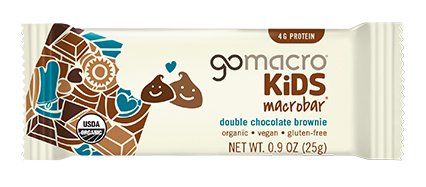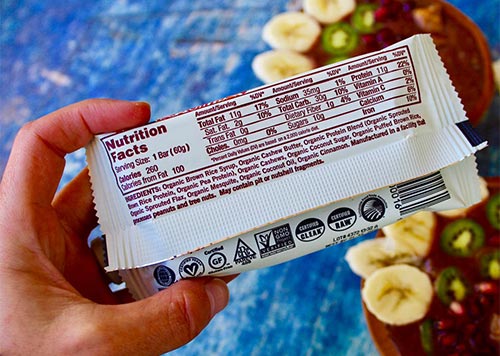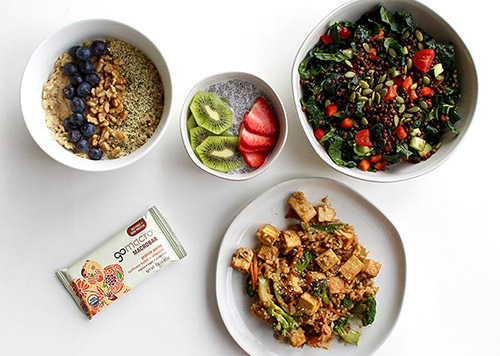Tips for Teaching Kids Wholesome Eating Habits
Parents know the story: you carefully select the best organic, seasonal produce. You lovingly plan and prepare a balanced, delicious meal. You set it in front of your kids…only for them to maybe try a single bite and request a highly processed or frozen meal. All parents and caregivers want their kids to have optimal nourishment, a healthy relationship with food, and the tools they need for a lifetime of healthy habits. However, with so many processed snacks on shelves, food advertisements targeting children, and busy schedules, it can be challenging to help your kids establish good eating habits.
No matter your child’s age, investing the time and effort to build healthy eating habits will have a significant positive impact on their health for life. With a little effort, consistency, and grace, you can help your children form healthy eating habits that will serve them for years to come.

How to Get Your Kids to Eat Wholesome Foods
As a parent, you know that a wholesome diet can help your child build long-lasting energy, stabilize their moods, sharpen their minds, and avoid a variety of physical and mental health problems. Kids, on the other hand, are mostly concerned with what tastes good. That’s why it’s key to find delicious foods they love that are also clean, such as Kids MacroBars® or these Vegan School Snacks.
It’s also never too early to start getting your kids involved in activities like grocery shopping, cooking, and learning about nutrition. However, we know that getting started is often the hardest part. Here are some simple tips to help kids establish healthy eating habits if you’re feeling stuck:
It’s also never too early to start getting your kids involved in activities like grocery shopping, cooking, and learning about nutrition. However, we know that getting started is often the hardest part. Here are some simple tips to help kids establish healthy eating habits if you’re feeling stuck:
1. Make Healthy Foods Tastier...and More Fun
Think about what you liked to eat as a kid. Most likely, unseasoned steamed broccoli wasn’t high on your list. Try adding other flavors you know your kids do enjoy to make healthy options a bit more palatable. This might include a sauce or dip like ketchup or ranch, spices like cheesy nutritional yeast, or adding healthy ingredients to an already-loved cooked dish like pasta or pizza.
Experiment with raw vs. cooked veggies, as well as different styles of serving. Some kids prefer all their foods to stay separate, others might prefer veggies hidden in dishes they already know and love. Try fun utensils, decorative picks for bite-sized food, and various plating styles to see if adding a little fun to mealtime interests them in other foods. If veggies aren’t their thing right now, remember that fruits can be a yummy way to add nutrients to their meals.
2. Offer Frequently, Don’t Force
Many parents grew up with rules like “no leaving the table until you eat all your green beans,” but forcing kids to eat certain foods has the potential to create more resistance and frustration for everyone. In fact, pressuring children to eat fruits and vegetables is associated with lower fruit and vegetable intake! The goal is to create healthy habits long-term, so simply continue offering wholesome foods on the table or plate at every meal.
If your child doesn’t like a food the first time you serve it, don’t assume that means it’s off-limits forever. As toddler parents know, tastes and preferences change all the time. Most children will come around with frequent exposure to healthy foods. Some days, they may push it away. On others, they might try a bite or even eat it all! The key is patience and gentle persistence.
3. Teach Them What Different Foods Can Do for Them
Telling kids that a food is “healthy” is probably too ambiguous to be meaningful for them. Getting specific about how healthy foods benefit them is a useful way to help them embrace nutritious foods now and equip them with knowledge for the future. For example, you could share that “carrots help you see better in the dark,” “green foods help your body fight off sickness,” or “oatmeal gives you energy for your soccer game.”
The way you talk about less nutritious foods is also important, as it can affect their lifelong relationship with food. Rather than labeling foods as “good” or “bad,” it may be helpful to serve less nutritious foods in moderation and talk about how certain foods may make us feel to help kids learn balance.
4. Start With Small Quantities
What feels like a normal kid-sized serving of a food might feel intimidating when it’s something new. Start with extremely small servings of unfamiliar foods so that kids feel safe to give them a taste.
For example, offer one carrot, a teaspoon-sized serving of yogurt, or even a couple of grains of rice. It may sound odd since it’s so different from how we fill our plates as adults, but it’s a low-pressure way to offer nutritious foods to picky eaters. You can always offer more if they seem interested or eat it quickly. Plus, you won’t waste as much food if it doesn’t turn out to be a hit!
5. Find Simple, Nutritional Upgrades
Adding extra vitamins and minerals into your child’s diet doesn’t have to be complicated! Add some sliced bananas or strawberries to their peanut butter sandwich, blend zucchini into a smoothie, add chia or hemp hearts into their oatmeal, or stir some beans or peas into mac and cheese.
It’s all about addition, not subtraction. Simple upgrades like these can help fill in nutritional gaps, add variety to their diet, and teach them healthy eating habits that will benefit them for their entire life.
6. Try “You Provide, They Decide”
So many adult eating habits are rooted in childhood eating habits. That doesn’t mean that a kid who hates vegetables will hate them forever, but rather parents’ food philosophies will impact a kid’s future food mindset. Policies like “you must eat everything on your plate” may be well-intentioned but, as mentioned earlier, can actually encourage kids to ignore hunger and fullness cues, even creating negative associations with mealtime.
You provide, they decide” means the parents choose what to serve at a meal, and kids get to decide what and how much they want to eat from what is provided – even if they don’t touch half of what’s on the plate. If they want another serving, you can provide it if you have enough. This teaches them to trust their own instincts, and they’re more likely to try another food on their plate if they know you’ll serve them more of their favorites without strings attached.
7. Remember to Hydrate
Hydration is also an important facet of a healthy diet for kids. Kids are often drawn to sugary beverages like juice, soda, sports drinks, and even energy drinks as they get older. However, water is almost always the best choice, and the American Academy of Pediatrics suggests children aged 1 to 3 consume 4 cups of water a day. Children 4 to 8 years old should aim for 5 cups per day, and older children 7 to 8 cups per day.
A splash of 100% fruit juice in a cup of water can help encourage kids to stay hydrated by adding some delicious flavor. Smoothies can be another great option for reaching the recommended intake – try opting for fruits with higher water content, like melons, strawberries, or pineapple.
8. Model Healthy Habits
Kids quickly pick up on the examples they see and hear in the household. Try to establish a routine and eat meals together whenever possible so that you can model healthy habits at the table. Keep nutritious snacks around and get the kids involved in grocery shopping, gardening, and preparing food so that they gain an interest in the flavors, shapes, colors, and textures of their meals.
Rather than framing healthy foods as something they just need to get through if they want dessert, help demonstrate the joy of eating foods that make you feel good. If you show excitement about enjoying vibrant, nutritious foods and make them the norm in your home, children will naturally want to be part of the fun. These skills will also help older kids become more self-sufficient and equipped to make their own nutritious meals as adults.
While we know that helping your kids eat healthy can sometimes feel like an impossible task, it’s an investment that’s well worth the time and effort. Equipped with these tips, a bit of determination, and lots of patience, you’re well on your way to a healthy, happy family.









